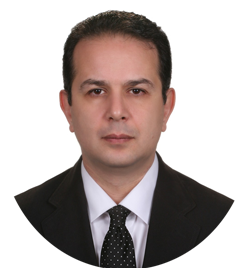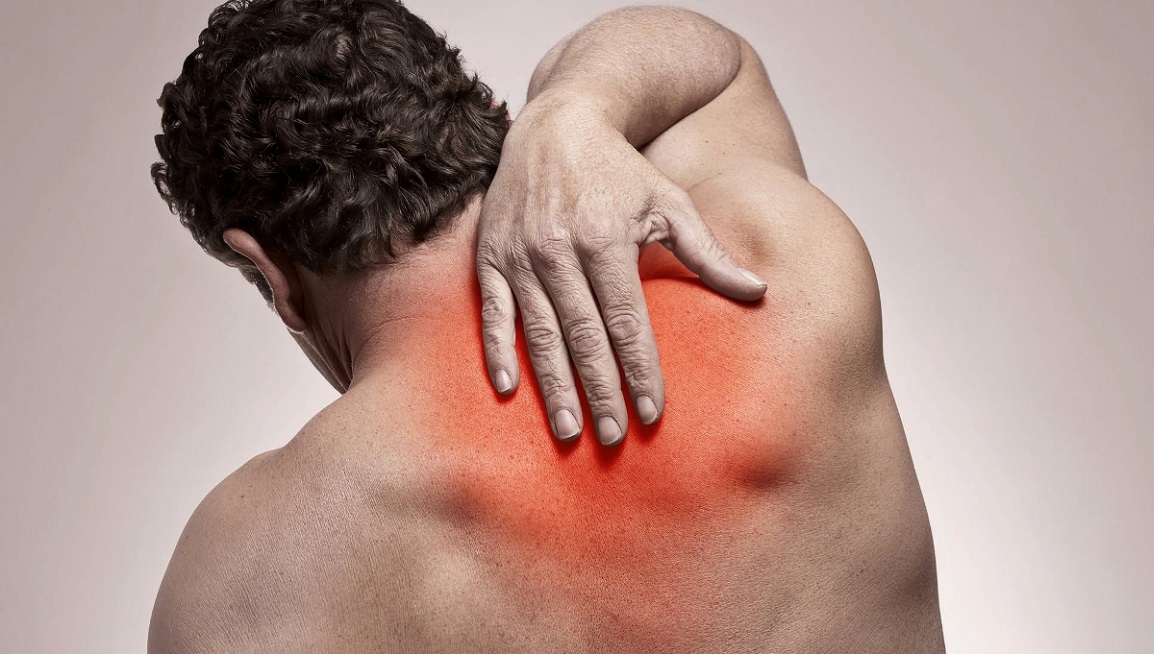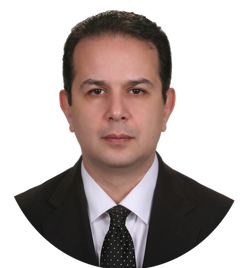Upper back pain is less common than other areas of the vertebrae, but the severity of the pain and discomfort of people with this problem is high. The extent of the involvement includes pain in the shoulder area to the end of the ribs near the waist.
تیترهای مهم این مقاله
Upper Back Pain Symptoms :
- Feeling tired
- Muscle spasms
- Touch sensitivity(Hyperalgesia) and paresthesia
- Radiating Pain in the neck and shoulders and front of the chest
- Muscle weakness and bad posture
- In cases such as vertebral fractures and canal stenosis, this area can be associated with severe disability.
- If symptoms of pain and disability are associated with shortness of breath or chest pain, cardiopulmonary problems should be considered.
Causes :
Muscle Stretching:
The shoulder girdle muscles and back of the chest are very sensitive to stretch. Muscle spasm occurs without warming up when lifting heavy objects.
Disk Damage:
Herniation of the discs can cause regional pain and radiating pain.
Vertebral fractures:
Vertebral fractures in this area can cause severe pain and disability.
Infection:
Infection of the meninges or vertebrae (osteomyelitis) can cause severe pain.
Osteoporosis :
Hormonal changes, vitamins deficiency can lead to osteoporosis, fragility and pain in the vertebrae.
Age :
Over time, inevitable tissue changes in the bones and ligaments occur, causing pain disorders.
Scoliosis:
Spinal abnormalities, whether in the form hereditary or trauma can cause scoliosis and pain.
Osteoarthritis :
Any damage to the vertebrae joints can cause arthritis and cause severe pain in this area.
Diagnosis :
Physical examination and evaluation of the muscles and vertebrae is very important.
Imaging Tests:
Imaging tests provide the physician complete information about the vertebral and spinal cord and arthritis problems.
Chest x-ray: To evaluate infection or bone mass and vertebral joints.
Computed tomography: CT scans can be used for more evaluation of bones.
MRI: Used to examine soft tissues including discs, ligaments, spinal cord and nerves.
Treatment:
The treatment is based on the underlying cause and the first step is non-invasive procedures that include:
Rest: Rest should only be relative
Chest Brace: Temporary closure of the brace or belt is only recommended in very advanced cases of arthritis or scoliosis, and prolonged use may weaken the spine muscles, leading to transfer of physical stress and more advanced arthritis.
Medications: Medications are used to relieve symptoms in the acute phase, as well as to restore muscle strength and relaxation, including muscle relaxants (peripheral and central), anti-inflammatory analgesics, and in severe cases can be used in limited usage of opiate medications.In the non-acute phase, combination soy and avocado medications can also be used to prevent the progression and recovery of arthritic lesions and to strengthen muscle strength.
Non-invasive treatments:
Physiotherapy: Physiotherapy uses a combination of passive methods and exercises to strengthen muscular structure and corrective movements. Passive therapeutic modalities such as ice / heat, ultrasound and electrical stimulation reduce pain and cramps in patients. The patient with osteoarthritis learns exercises to increase flexibility and range of motion by increasing his or her muscles strength.
Manual massage manipulation: The basis of these techniques performed by hand also strengthens the muscular structure of the tissues around the vertebrae. These techniques are very effective in patients with fibromyalgia and those with myofascial pain syndrome.
High Power Laser: High power pulse laser can increase cellular energy and repair damaged tissues and prevent arthritis progression.
Interventional treatments:
Interventional procedures are performed by a pain specialist under the guidance of X-ray (fluoroscopy) or ultrasound in the operating room.
Diagnostic and therapeutic injections: Injections in the spine such as combined steroids and locall anesthetics in the epidural space and injections into the intervertebral facet joints and also injection into foraminal space.
Kyphoplasty: In the case of vertebral fractures with kyphoplasty, the cement is injected into the body of a particular cement and regains its shape and consistency and relieves the patient’s pain.
Other interventional methods can include radiofrequency, ozone therapy, PRP injection, orthokine and so on. Mentioned elsewhere in detail …







